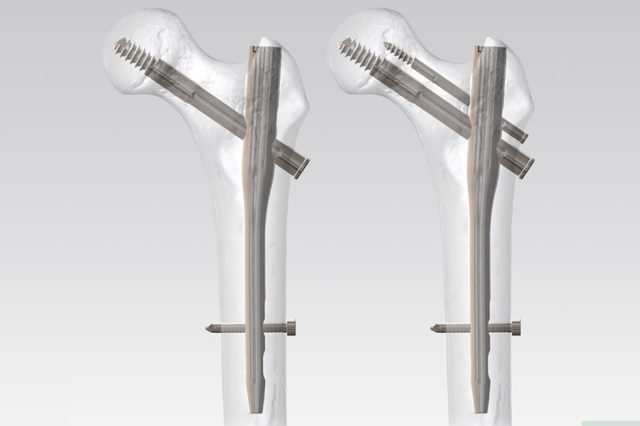The duration for which intramedullary nails stay in place depends on various factors, including the nature of the fracture, the healing process, and the surgeon’s decision. Intramedullary nails are often intended to provide internal fixation for the long bones during the healing period. Here are some general considerations:
- Fracture Healing:
- The primary goal of using an intramedullary nail is to provide stability to the fractured bone while it heals. The length of time required for bone healing can vary based on factors such as the location and type of fracture, the patient’s overall health, and adherence to rehabilitation protocols.
- Type of Fracture:
- The type of fracture influences how long the intramedullary nail needs to remain in place. Simple fractures with uncomplicated healing may require a shorter duration of implantation, while complex fractures or fractures near joints may require a more extended period of stabilization.
- Surgeon’s Assessment:
- The orthopedic surgeon monitors the progress of bone healing through follow-up examinations and imaging studies. Based on clinical and radiological assessments, the surgeon will determine when the fracture has healed sufficiently to allow for the removal of the intramedullary nail.
- Patient-Specific Factors:
- Patient factors, such as age, overall health, and lifestyle, can influence the decision about how long the intramedullary nail should stay in place. Younger patients with better bone healing potential may have different considerations than older patients.
- Comfort and Function:
- If the intramedullary nail is causing discomfort, pain, or functional limitations, the surgeon may consider earlier removal. Conversely, if the patient is not experiencing any issues and the fracture is healing well, the nail may stay in place for a more extended period.
- Complications:
- The presence of complications, such as infection, non-union, or malalignment, may necessitate earlier removal or additional interventions.
In many cases, intramedullary nails are intended to be permanent implants and can remain in the bone without causing issues. However, it is not uncommon for orthopedic surgeons to remove intramedullary nails after the bone has healed sufficiently. The decision to remove the nail is individualized and depends on the specific circumstances of each patient.
Patients should discuss the expected timeline for intramedullary nail removal with their orthopedic surgeon during follow-up appointments, and any concerns or questions should be addressed to ensure the best outcome for the patient’s long-term bone health and function.

